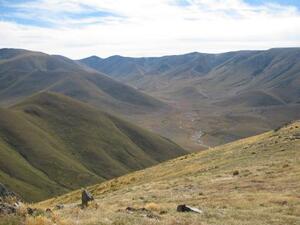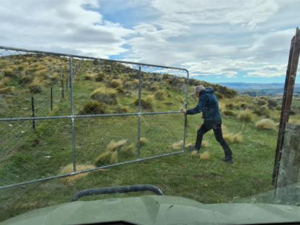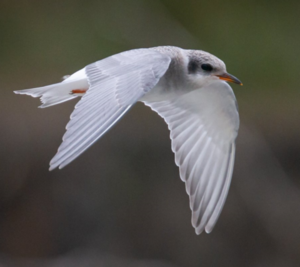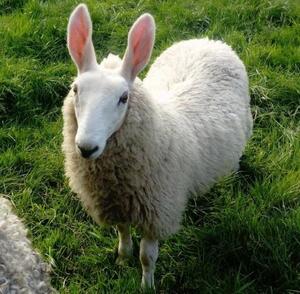Tēnā koutou and nau mai, haere mai to High Country Matters.
I’d like to take this opportunity to introduce myself as LINZ new Head of Crown Property.
Since I joined in November, I’ve immersed myself to understand the wide range of properties LINZ manages on behalf of the Crown to identify the various opportunities and challenges associated with each of those.
While this newsletter focuses on our management of Crown pastoral leases, LINZ does so much more than that.

Sonya Wikitera - Head of Crown Property
We manage everything from lakebeds and riverbeds, through to residential and commercial properties, as well as properties earmarked for Treaty settlement.
For some of you that won’t come as a surprise, but for others you may be as amazed as I was when I was first approached about the role.
Over the last few months, I’ve been fortunate to have already connected with some of you involved with our Crown pastoral leases and look forward to meeting more of you as the year progresses.
I understand we’ve made some improvements to become more active managers of Crown pastoral leases over the last couple of years and I’m excited to see how we continue to build on this, not only in the high country but also other properties in our care.
In this edition, we have an update on the Crown Pastoral Land Reform Bill and tenure review, which is ongoing until the new legislation comes into effect. The Bill is currently at the Committee of the Whole House phase and is set to resume next month.
We also update you on our pastoral lease visits, which have unfortunately been affected due to COVID-19 Omicron. Our portfolio managers are set to resume visits over the coming weeks. In the meantime, they continue to engage regularly with our leaseholders remotely.
We also have updates about our biodiversity and biosecurity work, a profile on Gary Walker in our pastoral team, and more.
I hope you enjoy the issue, and please get in touch if you have any feedback by emailing pastoral@linz.govt.nz
Heoi anō tāku mō nāianei,
Sonya Wikitera – Head of Crown Property
Pastoral lease visits drop due to COVID
Our pastoral lease visits are a bit lower compared to this time last year due to COVID-19.
Since August 2021, we’ve been following guidance from Te Kawa Mataaho/the Public Service Commission to limit travel to reduce the risk of spreading COVID-19. That’s meant a pause on visits over the lockdown, and the more recent Omicron outbreak to keep lessees and our team safe.
Pastoral Team Manager James Holborow says between July 2021 and the end of February the team has carried out 78 visits for a range of purposes including inspections, tenure review and discretionary consents.
“It’s been an unfortunate setback for us to be unable to visit pastoral leases over two periods the last few months.
“This period is typically when we would’ve carried out most of our visits, as weather conditions are ideal, and we can work in around farming commitments.
“Throughout this time, we have connected with leaseholders remotely to ensure we support them with any needs they may have.
“The team are looking forward to being able to get back out and about over the coming weeks.”
Crown Pastoral Land Reform Bill
The Crown Pastoral Land Reform Bill is going through the final stages in Parliament.
The Committee of the Whole House phase began earlier this year and at this stage is set to resume early next month. This stage involves a detailed consideration of each clause, or part, of the Bill.
Once this stage is complete, the Bill will proceed to the third reading. This is the final reading before the Bill proceeds to Royal Assent, at which stage it becomes law.
The Bill proposes changes to the Crown Pastoral Land Act 1998 and the Land Act 1948 to deliver improved outcomes for 1.2 million hectares of Crown pastoral land in the South Island high country, and an end to tenure review. This land, and the tenure review process, is administered by LINZ.
The Environment Committee recommended a range of changes to the Bill after taking into account extensive feedback from leaseholders, iwi, interest groups and the wider public. Some further changes to the Bill were included in a Government Supplementary Order Paper (SOP) that was tabled in the House in February 2022.
To view the latest version of the Bill, or for more information, visit the Parliament website.
Tenure review update
We are continuing to work on tenure review until the Crown Pastoral Land Reform Bill comes into effect. At that point, tenure review will end the day after the Bill is passed, except for pastoral leases at the substantive proposal put stage.
There are currently 23 properties in tenure review, six of which are in the implementation phase.
Below are details about two tenure review milestones recently reached for Dunstan Downs and Lowburn Valley.
Dunstan Downs – tenure review agreement reached
A tenure review agreement was recently reached for Dunstan Downs that will see 99 percent of the Crown pastoral lease become conservation land.
LINZ Head of Crown Property Sonya Wikitera says under the agreement around 12,250 hectares of the lease that spans Otago and Canterbury will become conservation land.
This is significantly higher than the 9,500 hectares proposed under the preliminary proposal.
“Public feedback was carefully considered and helped inform the decision to make more of the pastoral lease conservation land and improve public access to the area.
“The agreement will provide increased protection to these iconic landscapes, which include parts of the impressive Dunstan, Wether and St Bathans Ranges, and the special species that call them home.
“It will also improve access to these unique places and extend existing conservation areas for the public to enjoy for a range of recreational purposes.”

A view across part of Dustan Downs pastoral lease. Photo credit: Tim Whittaker/DOC
Ms Wikitera says it is one of the highest percentages of a lease to become conservation land under tenure review.
“We would like to thank everyone who provided feedback on the preliminary proposal, and the leaseholder whose family has farmed this land for over 100 years in a way that’s preserved these significant inherent values. It’s a real credit to them.”
Under the agreement, around 100 hectares will become private land owned by the leaseholder.
For more information, visit the LINZ website.
Lowburn Valley – record high submissions
A record number of submissions were received on the tenure review proposal for Lowburn Valley.
Late last year, we invited the public to have their say on a preliminary proposal for the 5,800 hectare pastoral lease located in Central Otago. Submissions closed on Monday 7 March.
A total of 50 submissions were received, which we’re currently reviewing and will have an update on in the next issue.
Under the proposal, 1,919 hectares would become conservation land and the remaining 3,896 hectares freeholded, with nearly half protected through conservation covenants restricting activities on the land.
Carbon farming
Traditionally, Crown pastoral leases have been used for pastoral farming, but more recently leaseholders have been looking to diversify into new areas.
We are currently working with the Commissioner of Crown Lands (the Commissioner) to develop a policy for carbon farming on Crown pastoral leases.
One area some leaseholders have expressed an interest in is registering new native or exotic trees or other existing native vegetation under the Emissions Trading Scheme (ETS) and claiming carbon credits.
We’ll be in contact with leaseholders with more information about this later in the year.
Meet the team – Gary Walker

Gary, right, with the farm manager of Godley Peaks Crown pastoral lease in the Mackenzie.
When did you join LINZ?
I’ve been at LINZ since December 2015.
What attracted you to work at LINZ?
Prior to LINZ, I worked for the Canterbury Earthquake Recovery Authority (CERA). I joined LINZ when management of the residential red zone transferred to LINZ shortly before CERA was disestablished. I continued supporting this work and then when an opportunity came up for a tenure review implementation manager and I thought it sounded interesting and applied. That role later expanded, and I now have a portfolio of leases that range from Marlborough to Southland.

Gary at Bellamore Crown pastoral lease in Otago.
What do you enjoy most about working at LINZ?
Getting out into the field, going to places that I wouldn’t normally get to see. Meeting and getting to know all the lessees I have the privilege of working with as part of my portfolio of leases.
Have you always had an interest in the South Island high country?
I’ve always had an appreciation for the high country and getting out tramping to explore it. My earliest tramps were around the Mt White area, initially with Christchurch Boys’ High School. Since then, I’ve walked the Milford Track three times, Heaphy Track twice and countless other tracks, primarily in the Arthur’s Pass area.
Can you tell us a bit about yourself and your background?
I moved around a lot as a kid, growing up as a military brat. I was born at the Waiouru Military Camp, moved to Burnham Military Camp, and then spent three years in Singapore when my parents were stationed there.
I started my career at the Inland Revenue Department (IRD) where I worked for 26 years, 12 of which were as an investigator. I was then seconded to CERA and was meant to be there for a week and ended up being there for almost five years!
I enjoy talking to different people and I’ve always liked roles that involve working with people, whether that be investigations, working with people in the residential red zone before they moved away, and now lessees.
What interests/hobbies do you have outside of work?
I enjoy home renovations. I’ve basically gutted the house that I’m in and have redone everything apart from the framing and floors. Since I’ve owned it, I’ve done three different extensions at various times and installed a lot of skylights.
My other interests include tramping (easier tramps nowadays), socialising and helping friends, and trying to get my lawn into a more respectable state (more velvet like).
Have your say – Mackenzie Destination Management Plan
The public is invited to provide feedback on the future of tourism in the Mackenzie – Te Manahuna Ki Uta/Destination Mackenzie.
The development of this Destination Management Plan (DMP) is being led by the Mackenzie District Council, with close collaboration with government agencies, iwi and the community.
The project involves the creation of a 100-year vision for the district and DMP to support the tourism industry, while protecting the values that make the area so special to those who live and visit the area.
To view a discussion document and provide feedback, please visit the Mackenzie District Council website.

A view across the Mackenzie.
LINZ is proud to be supporting the project, alongside Te Rūnanga o Arowhenua, Te Rūnanga o Waihao, Te Rūnanga o Moeraki, Ministry of Business, Innovation and Employment, Department of Conservation, Waka Kotahi NZ Transport Agency, and the Mackenzie Development Group (MDG).
Working smarter to protect our biodiversity
We’re working with the Department of Conservation (DOC) on innovative ways to protect Aotearoa’s biodiversity.
Together we’re developing a Long-term Insights Briefing on how information and emerging technology could be used to help biodiversity thrive.
Long-term Insights Briefings are a new requirement for agencies under the Public Service Act 2020 and are designed to look at future challenges and opportunities for New Zealand.
Thanks to everyone who made a submission when we invited feedback on the topic late last year.
Overall, submissions were supportive and agreed new approaches were needed to protect our native species.
More information about the Long-term Insights Briefing and the consultation report summary is available on our website.
Consultation on the final draft of the Long-term Insights Briefing, which is currently being developed, is expected to take place mid this year.
Boosting black-fronted tern numbers
A long-term project to increase black-fronted tern/tarapirohe numbers in Canterbury is having promising results and is now in its seventh year running.
Together with Environment Canterbury (ECan), the Department of Conservation (DOC), and Te Rūnanga o Kaikōura we’ve been enhancing and protecting tarapirohe nesting sites in the upper Waiau Toa/Clarence River.
The first phase of the project, which ran from 2015-2020, saw predator traps established around the perimeter of nesting sites.

Juvenile black-fronted tern. Photo credit: ECan.
Islands supporting nesting colonies were also enhanced with deepened channels to reduce access by hedgehogs, which are a major predator of tarapirohe eggs.
In addition, extensive weed control was carried out to reduce the amount of habitat available for predators to hide in.
Nesting and breeding rates have improved significantly at the protected sites.
Phase two, which started last year, continues to build on this.
Long trap lines have been installed on each side of the river, replacing the traps used in phase one, and the channels surrounding nesting areas deepened.
Official data on this year’s breeding season is still being collated and we look forward to sharing the results with you.
Did you know
Did you know we’re helping control Russell lupins in the Mackenzie?
Controlling pests and weeds requires a collaborative approach to make an impact.
The before and after pictures below shows the difference we can make in a relatively short time if we all work together.

Photo credit: Te Manahuna Aoraki Project.
Some of this control work was done by Te Manahuna Aoraki Project thanks to LINZ Jobs for Nature funding and some by DOC.
These photos were taken from the canal overbridge on SH8 between Twizel and Tekapo.
One fun thing
The Border Leicester always looks the part at this time of year with its rabbit-like ears.
While this sheep was introduced to New Zealand in 1859, we haven’t come across any on our pastoral leases! If you’ve seen them around us know!
Until next time, happy Easter from the team at LINZ!

Photo credit: Faithmead Yarns
Media contact
Email: media@linz.govt.nz